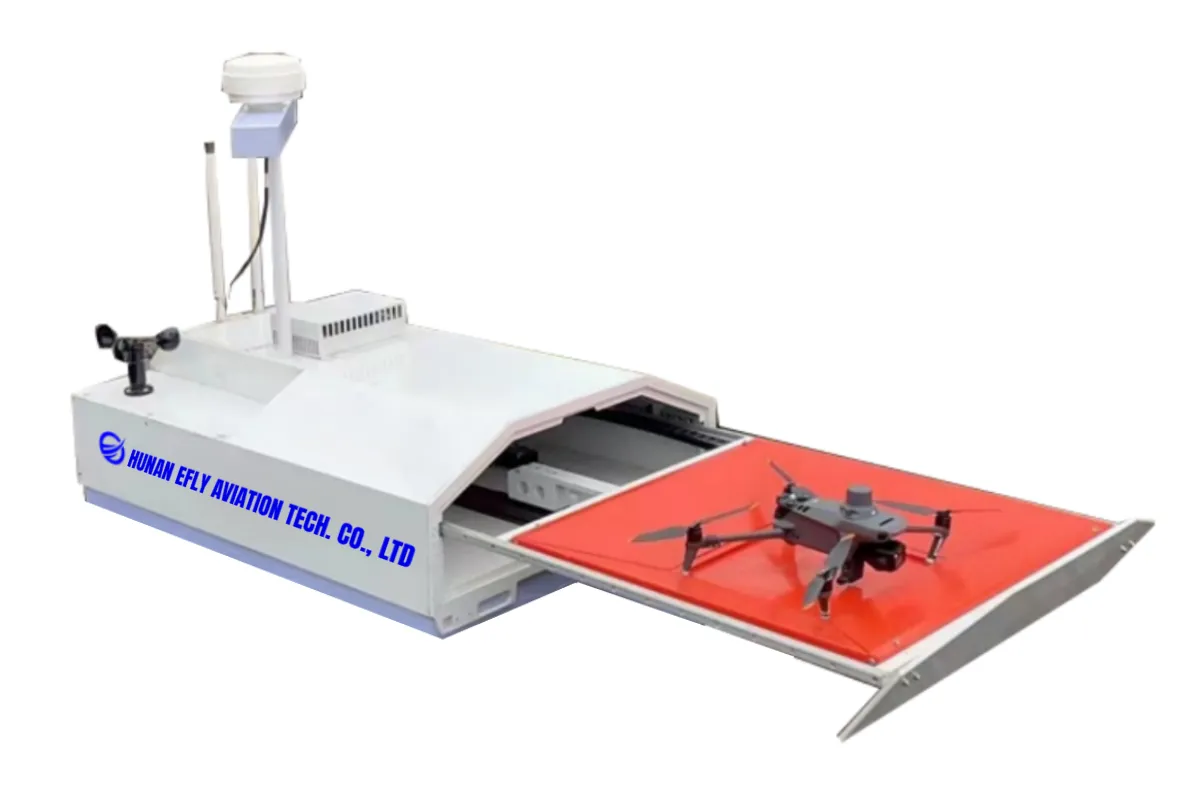1. Lower Operation Efficiency
(1). High manual work:
Every flight needs battery change, device calibration, and route upload by hand. This adds over 30 minutes per task and cuts efficiency by 40%.
Example: A power company spent 8 hours using 5 drones manually for 100 km inspection. With a drone hub, it only took 2 hours.
(2). Hard for multi-drone coordination:
Without a central system, drones can fly into the same space or cover the same area twice. This lowers task coverage by 20%-30%.
2. Limited Flight Time and Mission Continuity
(3). Poor battery management:
Replacing batteries by hand takes time and causes mistakes. One drone works 2-3 times per day without a drone hub, but 6-8 times with it.
Extreme heat or cold lowers battery life by 50% without temperature control.
(4). No long-range missions:
Without a drone hub’s charging network, drones can only fly within 20 km in remote places like mountains or deserts. A few drone hub can extend this to over 100 km.
3. Higher Maintenance Costs and Risks
(5). Faster equipment wear:
Drones left outside suffer from rain and dust damage. Motor and sensor failures triple, and yearly maintenance costs rise 60%.
Example: Oil and gas inspections showed 25% drone damage rate without hubs, but only 8% with them.
(6). Frequent calibrations:
Without a hub’s auto calibration (like RTK station links), workers spend 15 minutes daily on manual setup. This wastes over 150 hours per year.
4. Slow Data Management and Processing
(7). Poor real-time data:
Data must be moved by hand and uploaded to the cloud. Reports take 6-12 hours, which misses emergencies like leaks or fires.
Drone hubs can process 90% of data during flight, cutting report time to under 1 hour.
(8). Data security risks:
Memory cards can be lost or damaged. Local data without encryption risks leaks, breaking GDPR and cybersecurity rules.

5. Weak Environmental Adaptability
(9). Bad in extreme weather:
Drones without shelter fail 70% of the time in heavy rain or dust storms. Drone hubs provide heat and dust protection, cutting failure rates below 10%.
(10). Limited night work:
Workers must set up lights manually. Without drone hubs, auto takeoff and landing guidance is missing, so nighttime work success falls by 80%.
6. Bottlenecks in Scaling Up
(11). Low resource use:
One person can only manage 2 drones manually. With a drone hub and software, 1 operator controls 10+ drones, saving 75% labor cost.
(12). Poor expandability:
Adding new drones needs new software and hardware setup. Drone hubs allow quick modular docking, shortening deployment by 90%.
7. Compliance and Audit Problems
(13). Hard task tracking:
Manual flight logs miss key details like location errors or sensor status. These logs fail ISO 21384-3 drone operation standards.
(14). Non-standard reports:
Manual reports lack a uniform format. Audit pass rates are 40% lower than with drone hub automatic reports.
Case Study Comparison
| Scenario | Without Drone Hub | With Drone Hub | Difference |
|---|---|---|---|
| 100 km power inspection | 8 hours, 3 manual battery changes | 2 hours, fully automatic | 300% efficiency boost |
| Oil leak emergency | 12 hours to locate leak | 1.5 hours to heatmap report | 800% speed improvement |
| Annual maintenance cost | $14,000/year for 5 drones | $7,000/year | 60% cost reduction |
Conclusion
Drone inspection without a drone hub faces major issues like low efficiency, high costs, slow data, and security problems. It struggles in large projects, tough environments, or high-precision needs. A drone hub is not just a "support base." It is the key to automated, smart, and sustainable drone inspection.
[EFLY AVIATION]() focus on inspection, drone hub & software for over a decade, delivering premium inspection solutions.
